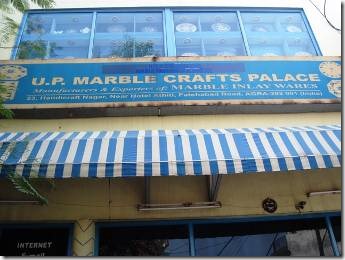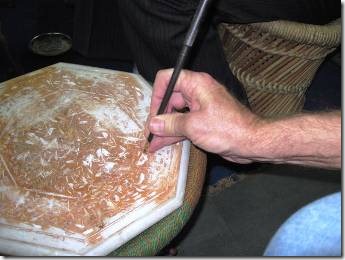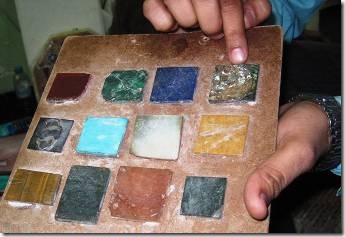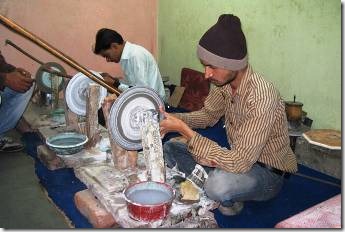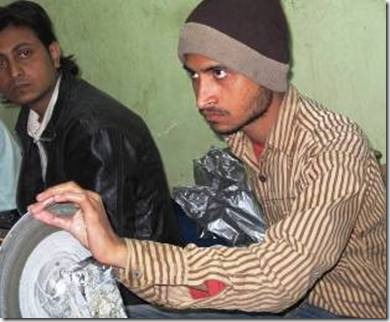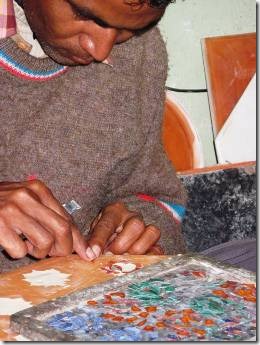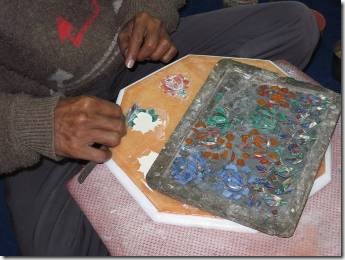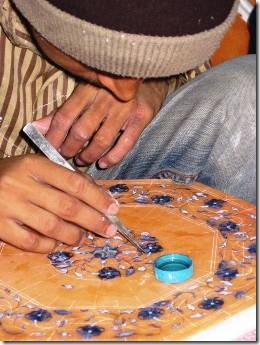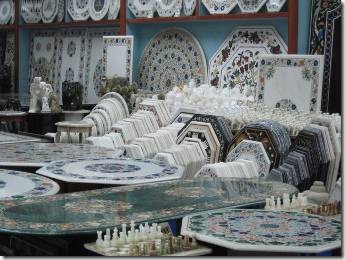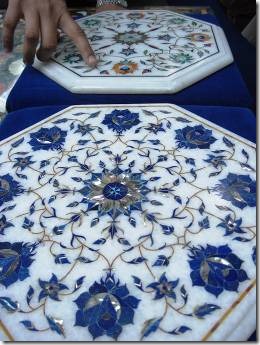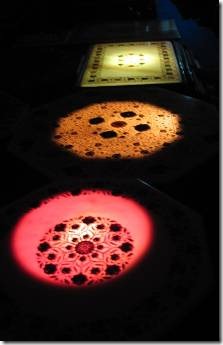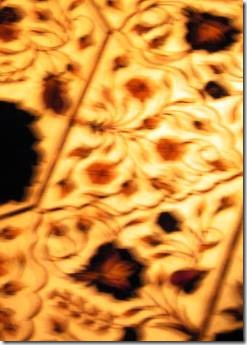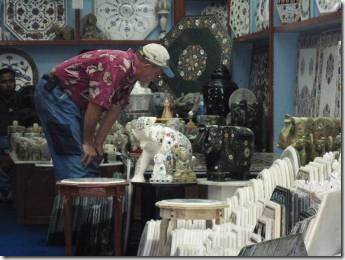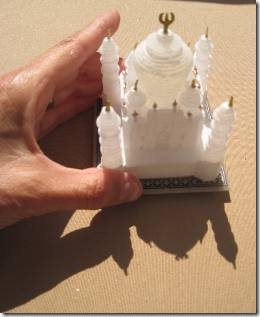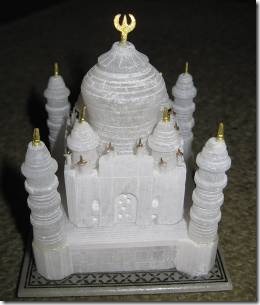The Danish sailing vessel, Ing, was taken by pirates February 24th. There are 4 adults and 3 teens on board. We had often seen Ing along our way.
Marble Crafts Palace
My sister wanted a “mini Taj Mahal” so our next stop was the Marble Crafts Palace. Everything is called a palace in India; or a resort! Sandeep, our combination “driver, guide, friend” told us several times that rich Indians donated money for food for the lucky cows who were living at the various “cow palaces.” We weren’t sure in that particular instance whether Sandeep used the word palace to mean “place” or if he used the word palace to mean a shelter of some sort. We never did see a “cow palace” though we saw lots of cows. Anyway, we did go to the Marble Crafts Palace to see how the decorative marble inlay was done though we knew there would be a sales pitch coming eventually. We were also told that the people working in the marble industry in Agra were descended from the Persian workers brought there to create the Taj Mahal. Skills are still passed from generation to generation in India. At the Kathakali performance in Cochin we had seen the young boy who was becoming a make-up master. During our stop in Fatehpur Sikri I took photos of a ten year old using a straight razor giving shaves at a sidewalk barber shop. Because of the strict caste system there was probably no choice but to do the work your father did.
The flower is made up of many pieces of cut and shaped stone. Each piece of cut stone is laid onto the marble which has been coated with ground red sandstone dust. The shape is etched into the marble and the dust leaves a visible pattern. Then the marble is cleaned off and the cut stone is put in place and glued with a mixture that includes sugar cane and honey but is permanent.
Randal trying his hand at carving the marble.
These are the examples of the different stones that are used.
Lapis lazuli, carnelian, coral, turquoise are some of the stones used with the marble. Some are opaque later you’ll see what happens when light is shined through them.
The cutter moves the bow back and forth which moves the wheel used to cut and shape the tiny pieces of stone.
The best workers have slender fingers.
Many of the pieces to be cut are very tiny so fingers also get rubbed against the cutting wheel. With his beard, mustache, hat and concentration, this worker reminded Randal and me of my nephew.
You can see how intricate the work is.
I believe these pieces are being glued onto the marble slab.
The show room.
The smaller the pieces of inlaid stone, the more expensive. If you can see the vein in a leaf it’s going to be very expensive.
Illuminated marble table tops.
Different colored light bulbs are used showing the colors that the Taj Mahal marble changes to throughout the day as the light changes: morning, noon and evening. The light bulbs are, of course, much more dramatic than the actual sun and moon light on the Taj.
Not a good photo but you can see that the light goes through come of the colored stones as well as the marble. Green and blue are opaque and block the light.
If one lived in a house rather than a boat, one could buy a really lovely table top.
My sister’s mini marble Taj Mahal.
They told us it was real marble…..only time will tell. But definitely not plastic.
Then it was time to get back into the car for the 6 hour drive back to Delhi. Ami on Estrelitta had told us that by car they had averaged about 30 kilometers per hour on a visit they had made to the highlands near Cochin. We found that to be true during our travels too which made it take forever to get anywhere. It would take 5 or 6 hours to go 200 kilometers, about 130 miles.

